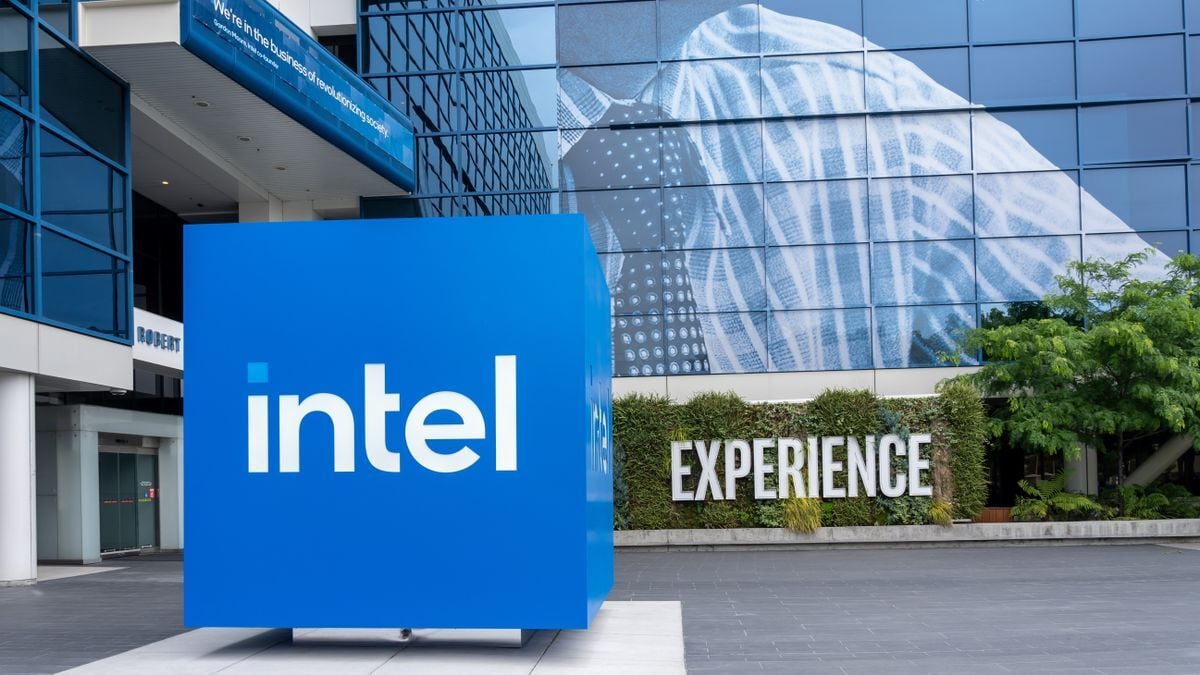Intel’s stock dropped around 30% overnight, shaving some $39 billion from the company’s market capitalization since rumors of a pending layoff first emerged. The devastating results come after the chip giant reported a loss for the second quarter, complained about yield issues with the Meteor Lake CPU, provided a modest business outlook for the next few quarters, and announced plans to lay off 15,000 people worldwide.
When the NYSE closed on July 31, Intel’s market capitalization was $130.86 billion. Then, a report about Intel’s massive layoffs was published, and the company’s market capitalization dropped sharply to $123.96 billion on August 1. Following Intel’s financial report yesterday, the company’s capitalization dropped to $91.86 billion. Essentially, Intel has lost half of its capitalization since January. As of now, Intel’s market value is a fraction of Nvidia’s worth and less than half of AMD’s.
As Intel’s actions look rather desperate, analysts believe that Intel’s challenges are existential. “Intel’s issues are now approaching the existential,” Stacy Rasgon, an analyst with Bernstein, told Reuters.



It certainly doesn’t help Intel has been intentionally selling defective product in the 13th and 14th gen lines. People are quite reasonably going to AMD more and more.
Does AMD have anything to compete with Intel QSV? I’m looking to upgrade my Plex server and was looking at a newer Intel CPU.
I believe AMD VCN does the same thing. Though I haven’t looked into it. AMD chips also have pretty decent onboard video cores, so you might be able to do hardware accelerated encoding that way too.
Just stay away from Intel 13th and 14th gen chips. They have oxidation issues from the factory and are also over-volting themselves. The former is unfixable and the latter causes unfixable damage.
Does laptop cpus have same problems? I’ve found mixed results.
We don’t know and Intel is being incredibly mum about the entire situation.
Which probably means a lot of corporations that have Intel inside their everyday computers may be less than enthusiastic about what they spent money on.
Read somewhere that everything 65W TDP and up is affected. Laptop CPUs should be mostly fine then.
OK, glad to hear this. Thank you. (Also hope it’s not another intel’s lie.)
IIRC Intel confirmed all Gen13/14 CPUs with 65W TDP or more have the same issues K series do.
OK, thanks for heads up.
I find software reencoding/remux instead of doing it on the fly is easier for my brain to manage over alignment of the hardware stars.
Eh… I will probably go with a used 9th or 10th gen i7 or something. Intel still gets no money and I get a good CPU.
That’s true as well. I’m using an older 7th gen Intel for remuxing, but do software AV1 encodes which take like 11 hours lol
I use the onboard CPU of my ryzen 5600g for my jellyfin and nextcloud (memories app) duties and it works flawless.
I hardly ever transcode at home. I mostly use ffmpeg on a crappy old i5 server that I use for other beataround stuff too. I tend to do that in batch mode and it’s fast enough for my purposes. That’s an approach to consider. Or you could spin up Intel VM’s as needed on Hetzner unless you’re doing a totally ridiculous amount of transcoding.
I need on-location transcoding because my internet is garbage (~50 mbps). Sometimes my users need to transcode the show if the bit rate of the file is too high for my internet to keep up.
Wait you’re literally serving other users from a home internet? Oh man, get a VM or some colo space or something. Or faster internet. Your internet is much faster than mine and one reason I transcode remotely is to drop the bit rate enough that I can download the transcoded version without waiting all day.
I mean, I can stream 4K HDR if the player supports the video format, but clients don’t always jive well with whatever Radarr decided. I know I can fine tune it but everything works well enough right now and I don’t have time to change it.
I move around too much to do colocation. A VPS/VM isn’t worth the cost to me. My server is all old parts and I don’t pay for power usage.